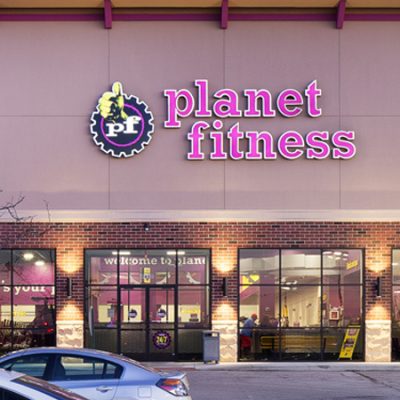There was a time not too long ago when gyms and exercise studios were less than welcome at many of the nation’s premier retail destinations. My, how the times have changed.
While parking, exclusive-use clauses and co-tenancy can still be tricky, the majority of shopping center owners have realized they need to work fitness in if they want to stand out.
“Health awareness in our nation has increased and the gym, health and fitness club industry has benefited from recent marketing campaigns aimed at fighting obesity and improving health,” says Eric Vu, senior associate at Hanley Investment Group Real Estate Advisors in the Orange County submarket of Corona del Mar, Calif. “Being fit has become a lifestyle as well as an image priority as people want to look and feel young as long as possible.
Get To The Gym
These fitness tenants perform double duty on the retail front. Gyms and health clubs not only absorb large amounts of space left behind by big box and department store closures, but they also draw in a clientele that has a reason to visit a center multiple times a week.
“Health-centric tenants are a huge draw to today’s health-conscience consumers,” Vu notes. “As shopping center owners look to replace vacant big-box tenants, health clubs have become a viable option and have gained favor from landlords as the emphasis on a healthy and active lifestyle has been adopted by a significant number of adults aged 20 to 64.”
This trend has also led to increased demand for single-tenant, net-leased (STNL) fitness investments. These investments are particularly popular among high-net-worth individuals and publicly traded REITs, especially when it comes to LA Fitness, Planet Fitness and 24 Hour Fitness. Last year brought about 10 LA Fitness, three Planet Fitness and one 24 Hour Fitness transactions, according to CoStar. By comparison, there were 42 single-tenant health clubs listed for sale nationwide this past April alone, including 13 LA Fitness, six 24 Hour Fitness and three Planet Fitness locations.
LA Fitness traded at an average cap rate of 6.59 percent in 2017, while Planet Fitness traded at an average cap rate of 7.7 percent, CoStar notes. The lowest cap rate for a single-tenant health club in 2017 was for a single-tenant LA Fitness in Los Angeles County, which sold for $15.7 million at a cap rate of 5.2 percent. The highest cap rate that year for a single-tenant health club was for a Planet Fitness in Olathe, Kan., which traded at 8.62 percent cap rate and sold for $8.8 million.
“The vast majority of single-tenant health club cap rates for LA Fitness are significantly lower than Planet Fitness because LA Fitness leases are backed by corporate, whereas the majority of Planet Fitness leases are backed by a franchisee,” Vu notes. “LA Fitness is the number-one health club in the nation, and is also perceived as having better credit.”
LA Fitness is currently underway on a 34,000-square-foot gym at Cedar Park Plaza in the Austin metro of Cedar Park, Texas. Further west, part of the six-building Valle Del Sol retail development in Chandler, Arizona, that is anchored by LA Fitness sold for $3.6 million to an out-of-state buyer just last month.
Planet Fitness opened an 18,052-square-foot gym across from Oak Park Mall in Overland Park, Kansas, in January. Total first-quarter revenue for the chain — which opened 47 new Planet Fitness franchise stores during the quarter — sat at $121.3 million. This was an increase of $30.2 million, or 33.2 percent, over first quarter 2017 revenue.
Studio City
Gyms aren’t the only ones experiencing growth, as Florian Suserman, managing partner in Ripco Real Estate’s Lyndhurst, N.J., office can attest.
“The fact is consumers also like the smaller specialty fitness brands. They like to go, get a more personalized class, work out in 45 to 50 minutes and leave to continue their busy lives,” he says. “Few people take only one fitness discipline like cycling. Most people belong to various specialty fitness studios for a diversified workout. It’s all about health, wellness, feeling and looking good.”
For this reason, it is no longer uncommon to see a sprinkling of smaller-format fitness studios like Orangetheory Fitness, Cyclebar, Pure Barre, CorePower and Club Pilates alongside larger gyms within the same center. Suserman notes that some brands, such as Cyclebar and Club Pilates (which are both franchise concepts by Xponential Fitness), actually prefer to be situated in the same shopping center.
Like Planet Fitness, Orangetheory is also extremely focused on growth. The fitness franchise grew its footprint in 27 states during the first quarter of 2018, opening nine new studios in California and five in Texas, two of the company’s targeted growth regions. Orangetheory hopes to open 1,100 new studios by the end of the year.
“Orangetheory Fitness’ relentless momentum has allowed us to accelerate our franchise development efforts in several prime expansion markets like California and Texas, and we’re thrilled to continue tapping into the wealth of potential in these regions,” says Mike Mettler, senior vice president of the company’s franchise development. “There are a number of factors that make Orangetheory an exceptionally attractive tenant, including consumer demand for experiences, our small footprint that allows us to be in more places and the distinct achievement of never having closed a studio.”
Statements like that may be music to a shopping center owner’s ears as they look to backfill vacancies, diversify offerings and pack their properties with internet-resistant experiences that cater to the ever-increasing health-conscious consumer.

